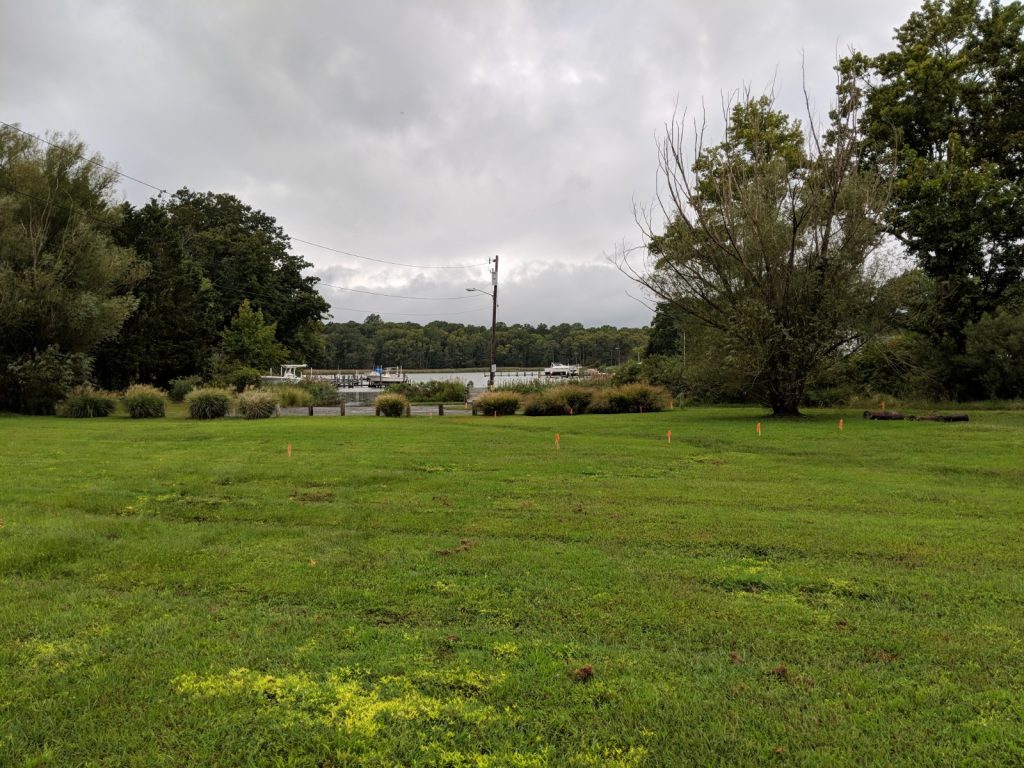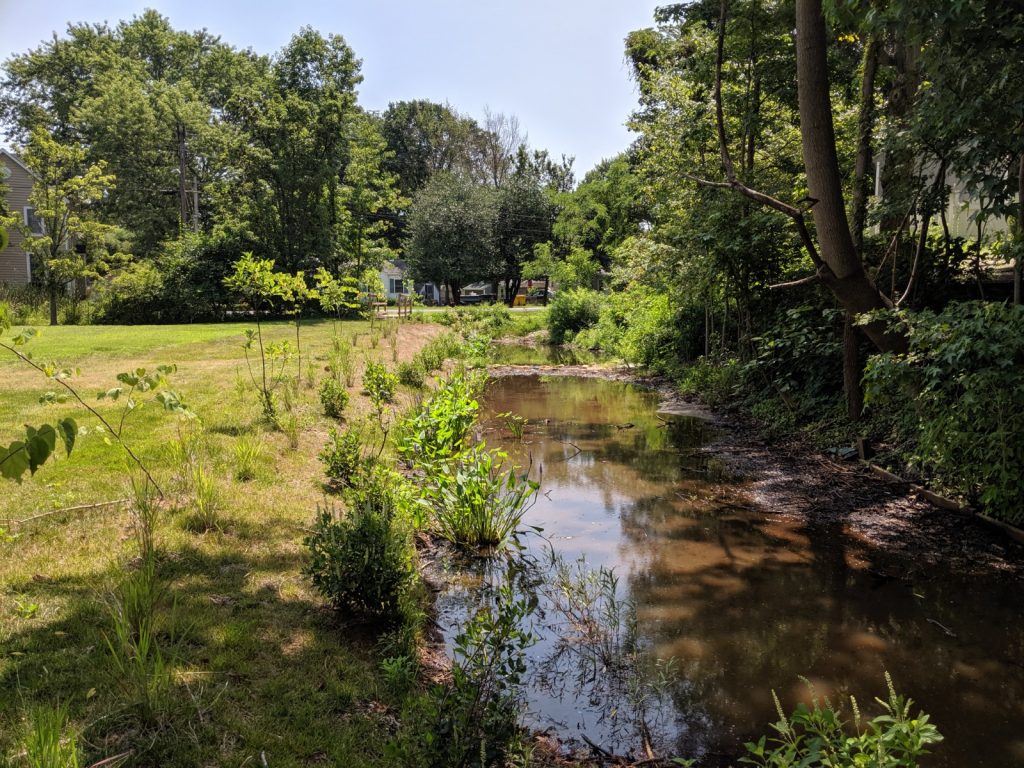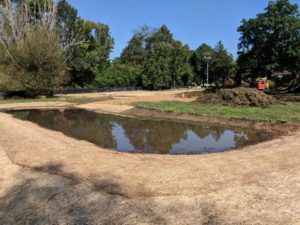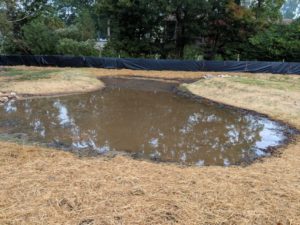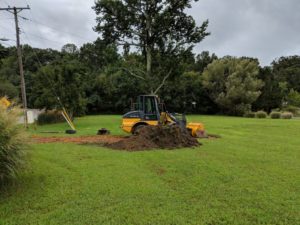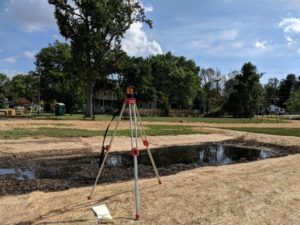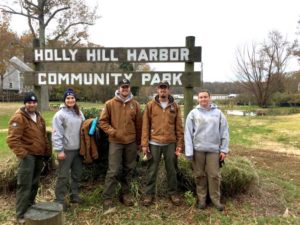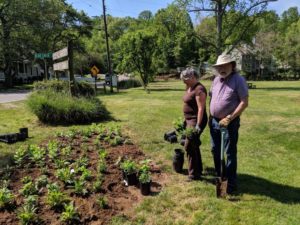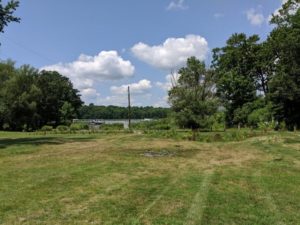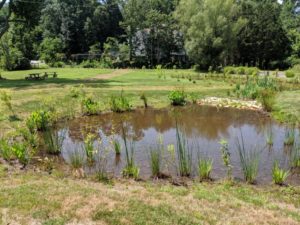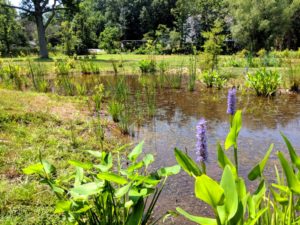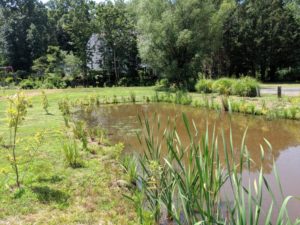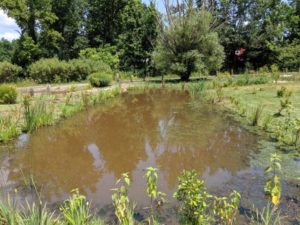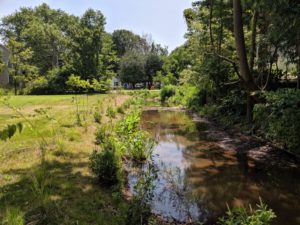In 2018, our area got a record amount of rain – twice as much as in a normal year. Fortunately, that’s the year we completed the new stormwater management project in the Holly Hill Harbor Community Park. The project treats all the stormwater that runs off of the surrounding 11 acres and filters it before the nutrients and sediment it contains can pollute the creek. BWI Airport recorded nearly 72” of rain last year. A storm that drops one inch covers one acre with an astonishing 27,000 gallons of water. Multiply that by 11 acres and by 72” inches of rain, and that gives us a total of the amount of water that ran through the park last year: nearly 300,000 gallons, equivalent to 32-1/2 Olympic-sized swimming pools.
The project comprises about 4,317 square feet of new wetlands, planted with more than 400 hardy and attractive native trees and shrubs. Lined with a mixture of sand and wood chips, the wetlands allow water to seep into the soil, while the plant roots absorb moisture and nutrients. There’s also an underground layer of gravel and wood chips to allow for increased underground water storage. These features were working at capacity last year, as shown by the amount of time it took for the water to be absorbed into the ground.
We estimate that this project will keep 83 pounds of nitrogen, 6.4 pounds of phosphorus, and a whopping 2.3 tons of sediment from polluting Bear Neck Creek – every year.
The design for this project was funded by a $30,000 grant from the Chesapeake Bay Trust. Construction was funded by a grant from the Maryland Department of Natural Resource’s Chesapeake and Coastal Bays Trust Fund and another Chesapeake Bay Trust grant for a total investment of about $110,000. Most of the trees and shrubs were planted on the rainiest day of the rainiest year by students.
While we were hoping that the project would also solve the chronic bacterial pollution problem, we continued to see elevated readings this summer, even when it wasn’t raining. This frustration led us to find a way to discover the source of the bacteria. We know it must come from the guts of some warm-blooded animal, but is it people poop, dog poop or goose poop? The answer will be revealed when scientists at the Smithsonian Environmental Research Center complete their DNA source-tracking analysis of the water samples we collected this summer. We’re hoping to get the results before the end of the year. When we do, we’ll consult with the community to come up with a strategy so solve the problem once and for all. Stay tuned!
